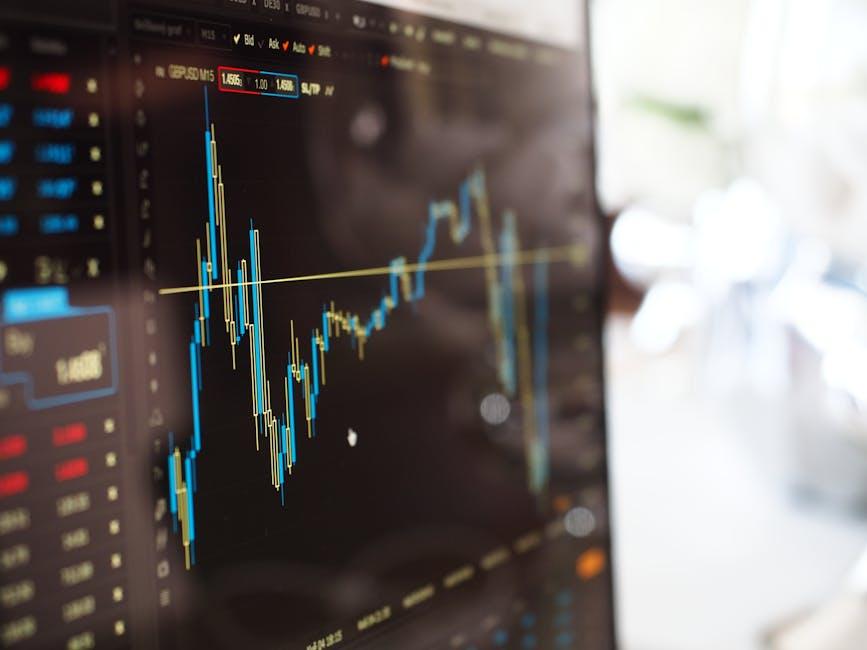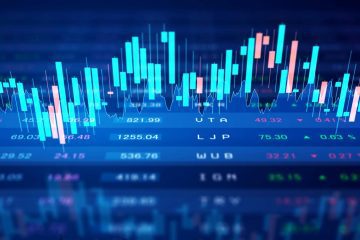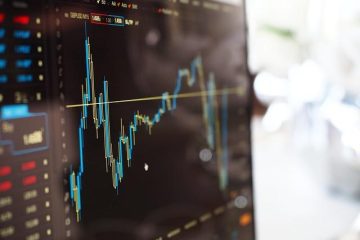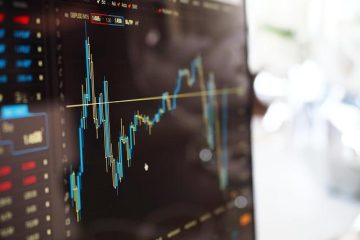Table of Contents
- The Historical Significance of the 1987 Stock Market Crash
- Understanding the Causes Behind the Market Plunge
- Lessons Learned: Trading Strategies from 1987
- Navigating Market Volatility: Recommendations for Modern Investors
- The Long-Term Impact on Financial Regulation and Investor Behavior
- Q&A
- Key Takeaways


The Historical Significance of the 1987 Stock Market Crash
The stock market crash of 1987, often referred to as Black Monday, represents a pivotal moment in financial history that sent shockwaves throughout the global economy. On October 19, 1987, the Dow Jones Industrial Average plummeted an astonishing 22.6% in a single day, the largest decrease in percentage terms in the index’s history. This event was not merely an isolated incident; it was the culmination of various economic factors that had been building over the years, highlighting significant vulnerabilities within financial markets.
Several key elements contributed to the severity of the crash, including the rise of computerized trading and an underlying sense of market overvaluation. Investors were increasingly relying on program trading, a method that automatically sold stocks when prices hit certain thresholds. When the market began to decline, these automated systems exacerbated the situation, leading to a rapid, cascading effect of sell-offs. Additionally, the economic backdrop of the time—with rising interest rates and a diminishing confidence in the U.S. dollar—further fueled investor panic.
In the aftermath of the crash, a host of regulatory changes were introduced to prevent such occurrences in the future. These reforms included stricter rules on margin trading and the establishment of trading curbs, known as ”circuit breakers,” designed to temporarily halt trading in times of extreme volatility. The lessons learned from this event shaped the evolution of modern financial markets, as investors and regulators alike became acutely aware of the intricate relationships between trading practices, market psychology, and economic stability.
Understanding the Causes Behind the Market Plunge
The stock market crash of 1987, often referred to as “Black Monday,” was precipitated by a confluence of factors that ultimately led to a massive drop in stock prices. One primary cause was the rise of program trading. This automated trading strategy enabled computers to sell large quantities of stocks rapidly when specific market conditions were met. As stock prices began to plummet, program trading accelerated the decline, creating a domino effect that caught investors off guard.
Another significant contributor was the prevailing economic climate, characterized by rising interest rates and increased inflation. Many investors feared that tightening monetary policies would lead to an economic slowdown. This sentiment prompted a wave of sell-offs, where investors opted to liquidate their positions en masse, further driving down prices. Compounded by the interplay of emotions such as fear and uncertainty, this environment amplified market volatility.
Additionally, international factors played a role in the turmoil. Global markets were interconnected, and foreign market tensions, particularly in places like Hong Kong, influenced U.S. investor sentiment. The integration of international investments meant that adverse conditions abroad could sway market behaviors domestically. These elements combined to create a perfect storm, resulting in one of the most severe market declines in history.


Lessons Learned: Trading Strategies from 1987
Reflecting on the seismic events of 1987 provides invaluable insights for today’s traders. The market crash, often attributed to a combination of factors such as investor psychology and technological vulnerabilities, reinforces the importance of having a robust trading strategy. One critical lesson learned is the necessity of diversification. Traders who relied heavily on a narrow set of investments experienced significant losses, while those who spread their risks across various sectors fared better. This recognition is especially relevant in today’s volatile market environment.
Another fundamental takeaway from 1987 is the impact of emotional decision-making. The psychological toll of rapid market shifts can lead to impulsive trading, which often exacerbates losses. Maintaining discipline in trading is vital; sticking to a pre-defined strategy helps curb the temptation to react based on fear or euphoria. Establishing clear stop-loss and take-profit orders can provide a framework that mitigates emotional responses and safeguards investments during uncertain times.
Lastly, the importance of technological readiness cannot be overstated. In 1987, many investors faced execution delays and volatility as systems struggled to process a flood of sell orders—all due to outdated technology. Modern traders must prioritize investing in advanced trading platforms and tools that facilitate timely execution. Learning from the past emphasizes the need to stay updated with technological trends and embrace innovations that enhance both trading efficiency and accuracy.


Navigating Market Volatility: Recommendations for Modern Investors
Market volatility is a constant in the investment landscape, and understanding how to navigate it can make a significant difference for investors. Conducting thorough research is essential before making any investment decisions, especially in times of uncertainty. Relying on fundamental analysis can help you identify the potential strengths or weaknesses of an asset. Additionally, incorporating technical analysis strategies can provide insights into market trends and price movements, allowing investors to make more informed choices.
Another approach to managing risk during turbulent times is to diversify your portfolio. By spreading investments across various asset classes, such as stocks, bonds, and commodities, you reduce the impact of a poor-performing asset on your overall portfolio. Here’s a simple breakdown of diversification strategies:
- Include different sectors: Invest in healthcare, technology, and consumer goods.
- Consider geographical diversification: Look into emerging markets alongside domestic equities.
- Use alternative investments: Explore real estate or commodities as a hedge against market downturns.
Investors should also prioritize maintaining liquidity in their portfolios. Keeping a portion of your portfolio in cash or cash equivalents allows you to quickly respond to market opportunities or emergencies without the stress of liquidating investments at a loss. Here’s a snapshot of liquidity options:
| Liquidity Option | Description | Benefit |
|---|---|---|
| Cash | Physical currency or bank deposits. | Immediate access; no transaction time. |
| Money Market Funds | Investments in short-term, low-risk securities. | Higher potential returns while remaining liquid. |
| Short-Term Bonds | Bonds with maturities of 1-3 years. | Steady income with manageable risk. |
Staying informed about economic indicators and market sentiment can help investors anticipate market movements. By blending strategic research, diversification, and maintaining liquidity, modern investors can confidently navigate the unpredictable waters of market volatility, enhancing their resilience and potential for long-term success.


The Long-Term Impact on Financial Regulation and Investor Behavior
The stock market crash of 1987, often referred to as Black Monday, was a pivotal moment in financial history that led to significant changes in how financial markets are regulated. In the aftermath, regulatory agencies recognized the need for more stringent frameworks to prevent such rapid and widespread sell-offs. This realization prompted a re-evaluation of the existing rules governing trading practices and investor protection mechanisms, resulting in the implementation of measures that enhanced transparency and bolstered market stability.
Additionally, investor behavior experienced a noticeable shift following the 1987 crash. Many individual and institutional investors became more cautious, adopting a more disciplined approach to investment strategies. This caution manifested in various ways, such as increased demand for quantitative models and risk assessment tools. Investors became more aware of the psychological aspects of trading, leading to a trend in favor of long-term investments over speculative trading. Key changes included:
- Increased focus on diversification to mitigate risk
- Heightened scrutiny of portfolio management strategies
- Growth in the popularity of mutual funds and index investments
In response to the events of 1987, regulatory bodies also established automated trading safeguards and circuit breakers to avert future market calamities. These measures are designed to temporarily halt trading during periods of extreme volatility, allowing investors time to assess the situation and make informed decisions. The following table illustrates some of the critical regulatory changes made post-1987 and their intended effects on market stability:
| Regulatory Change | Intended Effect |
|---|---|
| Implementing circuit breakers | To prevent excessive volatility and provide a cooling-off period |
| Enhanced disclosure requirements | To improve transparency and build investor confidence |
| Stricter enforcement of trading rules | To deter market manipulation and promote fair play |
Q&A
Q&A: Understanding the Stock Market Crash of 1987
Q1: What triggered the stock market crash of 1987?
A1: The stock market crash of 1987, often referred to as “Black Monday,” was primarily triggered by a confluence of factors. Leading up to the collapse, a mix of overvaluation, rising interest rates, and geopolitical tensions created a precarious economic environment. The introduction of program trading—a technique where computers executed transactions based on predefined strategies—also exacerbated the situation. When stocks began to drop sharply, these automated programs amplified the selling pressure, resulting in a dramatic market plunge.Q2: How severe was the crash in terms of market impact?
A2: The crash was unprecedented, marking one of the largest single-day percentage losses in history. On October 19, 1987, the Dow Jones Industrial Average plummeted by 22.6%, a decline that wiped out an estimated $500 billion in market value. This staggering drop sent shockwaves through global markets, causing widespread panic and uncertainty among investors, many of whom were still reeling from the recent bull market.Q3: What were the immediate consequences for investors?
A3: The immediate aftermath of the crash left many investors unsettled and fearful for their financial futures. Many experienced significant losses in their portfolios, leading to a temporary retreat from equity investments. The market’s volatility prompted institutional investors to reassess their strategies, and some even moved away from stocks entirely, opting for safer, less volatile assets in the short term.Q4: How did the government and regulatory bodies respond to the crash?
A4: In response to the crash, U.S. policymakers and regulatory bodies acted swiftly to restore investor confidence. The Federal Reserve, led by Chairman Alan Greenspan, assured markets that it would provide liquidity to stabilize the financial system. Additionally, regulatory reforms were proposed, aimed at addressing the risks associated with program trading and enhancing market oversight. These actions were pivotal in preventing a more severe financial crisis.Q5: What lessons were learned from the 1987 crash?
A5: The 1987 stock market crash taught valuable lessons regarding market psychology and the importance of investor sentiment. It highlighted the dangers of excessive leverage and the potential vulnerabilities introduced by automated trading systems. As a result, financial markets adopted new regulations to promote transparency and mitigate systemic risks, helping to fortify the market against similar events in the future.Q6: How has the perception of the 1987 crash evolved over the years?
A6: Over the decades, the perception of the 1987 crash has transformed from a moment of panic to a case study in market dynamics. While it was a traumatic event for many, it also sparked discussions about risk management, technological influence, and the psychological aspects of investing. Today, it serves as a reminder of the stock market’s unpredictable nature and the necessity of perseverance and informed decision-making in the face of uncertainty.Using these questions and answers, readers can gain a clearer perspective on the complexities of the stock market crash of 1987, equipping them with both historical context and practical insights.




0 Comments